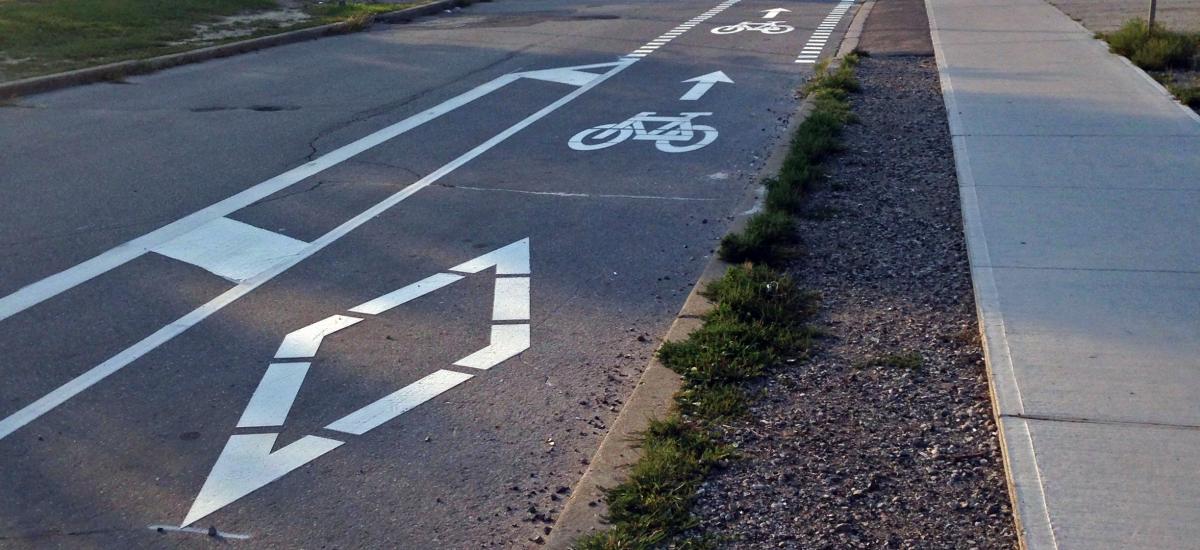What’s the holdup on getting our Bike Plan built?

By Robert Zaichkowski and Sarah Bradley
Snapshot: 25 kilometres of on-street infrastructure since 2016
During the first two and a half years following implementation of the City of Toronto’s Cycling Network Plan (which promised to build approximately 525 kilometres of cycling infrastructure), only 25 kilometres of on-street infrastructure have been installed. That includes about eight kilometres installed in 2018, mostly consisting of short connections on quiet streets. This counts painted lanes, contraflow lanes, cycle tracks, and boulevard trails* (e.g. Eglinton West), but not off-road trails (e.g. Etobicoke Creek). At this rate of ~8km per year, we won’t build out the cycling network until 2049 - a far cry from the intended date of 2026.
*We include boulevard trails in the count as they can be considered part of the on-street network of cycling infrastructure.
Here's a map showing this minimal progress (click for the full map):
Map and implementation tracking by Robert Zaichkowski and Albert Koehl
Why so slow?
One of the reasons things have been moving at a snail’s pace are the cancellation of several Major Corridor Studies, which preclude cycling infrastructure on arterial roads. Though Major Corridor Studies on Bloor St. (from Keele to Sherbourne), Yonge St. (from Bloor to the Waterfront), and Yonge St. (between Avondale and Steeles) were already underway when the 2016 Bike Plan was approved, Council voted to delay all other Major Corridor Studies until 2019. That means radio silence on streets like the Danforth - a key east-west corridor that’s ripe for bike lanes, as well as busy arterials like Jane St. and Kingston Rd. Looking ahead to this term of council, our priority remains getting bike lanes on Bloor, Danforth, and Yonge.
Sadly, we’ve witnessed no progress at all on these corridors since the Bloor bike lanes between Shaw St. and Avenue Rd. were made permanent in fall of 2017.
Notice the huge gaps right across the city? That’s right: of this 25 kilometres total, Scarborough got no new cycling infrastructure and North York got very little.
Scarborough: nothing but trail connections
While community organizations like Access Alliance through their Scarborough Cycles project have been steadily building cycling culture through programming at their four hubs, they desperately need infrastructure to achieve goals of increasing ridership and accommodating those people already riding.
No major infrastructure has been installed in Scarborough since the Bike Plan was approved. According to Marvin Macaraig, who coordinates the Scarborough Cycles project, the only improvements made have been on recreational trails, including small connections along the Gatineau Corridor Trail.
One project which would have helped catalyze change in Scarborough was the Port Union Road widening. Despite being already delayed for fifteen years, it's now pushed back again to 2019 per this article back in August.
A recent Toronto Star article noted that a disproportionate number of vulnerable road user deaths in 2018 happened in Scarborough. With high volumes of traffic and high speeds on arterials like Bellamy Rd. (where two people were struck and killed last year), Birchmount Rd., and Pharmacy Ave. in southwest Scarborough (where bike lanes were installed, and then removed in 2011 during the Rob Ford years), we simply won’t move the needle on getting more people to ride without a bold investment in physically separated bike lanes away from motor vehicle traffic - because that’s where people are riding.
North York: Minimal improvements over the past three years
Things aren't much better in North York, where less than one kilometre was installed north of Eglinton Ave. West from 2016 to 2018 as part of the Downsview and York University project. The rest is due sometime this year, though a large gap remains in North York with almost no cycling infrastructure in an area bounded by the Don and Humber River Trails, the Finch Hydro Corridor, and the Beltline Trail (or Eglinton Ave. West). This area of 84 square kilometres is roughly the size of Guelph.
So what have we achieved?
The improvements we saw last year were crumbs. We celebrated neighbourhood connections through Thorncliffe Park and Flemingdon Park, but without any infrastructure on busy Overlea Blvd., these neighbourhoods remain cut off from the rest of the city. We got improvements on quiet streets on York University’s campus - but again, nothing on the major arterials like Keele St. that students have to navigate to get to campus.
You’ll see more unfinished business in Etobicoke and the Waterfront. The Plan had called for the filling of two trail gaps in 2018, on Eglinton Ave. West (Spectrum Way to Etobicoke Creek) and Unwin Ave. (to complete the Martin Goodman Trail). Unfortunately, these have both been delayed until this spring.
The new Infrastructure & Environment Committee holds their first meeting on January 17. Of note: the only cycling related item on the agenda is to make the Richmond-Adelaide cycle tracks permanent.
We’re off to a slow start in 2019. What will it take to get the wheels in motion to build the Bike Plan?
Frustrated at the slow progress?
Join us at TCAT’s Biking Beyond Downtown event on January 17 to talk about how we can continue to build cycling culture across the city, despite slow progress on building infrastructure.
We’ll be monitoring Council and Committee meeting for cycling infrastructure agenda items. Want to be the first to know when there’s an opportunity to take action? Sign up to get our Action Alerts.
Get up to speed on our Bloor, Danforth, and Yonge campaigns.
